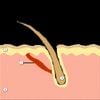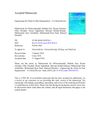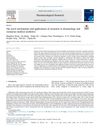Innovations in Regenerative Medicine That Improve the Results of Stem Cell Treatment: 3D Cultivation, In Vivo Modeling of Stem Cell Niche, and Prenatal Stem Cells Exosomes
January 2019
in “
Cell & developmental biology
”
hair loss alopecia hair follicle stem cells 3D culture technology Fetal Tissue Extracts SC transplantation SC-derived exosomes rejuvenation program biological age frailty index 3D cultivation in vivo modeling stem cell niche prenatal stem cells stem cells 3D culture FTEs stem cell transplantation exosomes rejuvenation frailty
TLDR 3D cultivation and prenatal stem cell exosomes improve stem cell treatment results, especially for hair loss and age-related issues.
The study addressed the challenge of hair loss, particularly in large areas of alopecia where patients lack sufficient hair for auto-transplantation. Traditional 2D cultures for multiplying hair follicle stem cells (SCs) were unsuccessful, leading to the development of a 3D culture technology that successfully formed new hair follicles suitable for transplantation. The research also explored the use of Fetal Tissue Extracts (FTEs) to create a supportive microenvironment for SCs, showing high efficacy in treating liver cirrhosis and non-healing wounds in patients unresponsive to previous SC treatments. The combination of SC transplantation and SC-derived exosomes in a rejuvenation program yielded optimal therapeutic results in 78.9% of patients, significantly reducing biological age and frailty index, thus lowering the risk of age-related diseases. The findings highlighted the potential of 3D cultivation, in vivo modeling of SC niches, and prenatal SC exosomes to enhance the outcomes of SC-based regenerative medicine.







